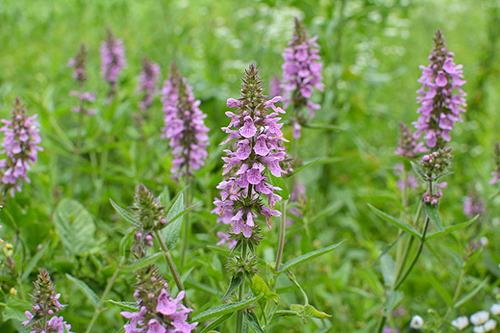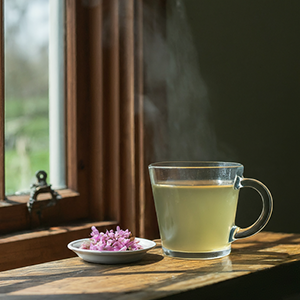Contents
The leaves of wild betony are like those of nettles; however, they lack rashing hairs. They have a slightly hot flavor and a fetid odor.
Betony (Stachys officianalis [L.] Trevisan) belongs to the same botanical genus as wild betony; however, it has different medicinal properties.

Wild Betony Scientific Facts
- Scientific Name – Stachys silvatica L.
- French – Stachys, epiaire.
- Spanish – Ortiga hedionda.
- Environment – Widely spread in humid European forests, mainly near oak and beech tree forests.
- Description—This is a Vigorous plant of the Labiatae family, growing from 0.6 to 1 m high. Fine hairs cover its stem and leaves, and purple flowers with two lips are present, like all plants of the Labiatae family.
- Parts of the plant used medicinally – The flower clusters.
Healing Properties
The entire plant contains an essential oil whose composition is very complex. It has antispasmodic (it relaxes muscles of involuntary contraction), sedative, and emmenagogue (it regulates and normalizes menstruation) properties.
Its main application is to treat irregular or painful menstruation (dysmenorrhea) and menopause disorders. This plant alleviates spasmodic contractions of the uterine muscles and eases the pain those spasms can cause.

Marsh Betony
Marsh betony (Stachys palustris L.), also called red betony, is a species similar to wild betony. It is usually employed as an extract. Its antispasmodic and sedative properties are practically the same as wild betony ones.

According to Leclerc, marsh betony can reduce the dose of barbiturates when administered, decreasing the risks of using these pharmaceutical preparations.
How to use Wild Betony
- Infusion with 20-30 grams of flower clusters per liter of water. Drink two or three cups daily, especially during the week before the expected menstruation date.
DISCLAIMER: All content on this website is presented solely for educational and informational objectives. Do not rely on the information provided as a replacement for advice, diagnosis, or treatment from a qualified medical expert. If you are pregnant, nursing, or have any preexisting medical concerns, talk to your doctor before using any herbal or natural medicines.
REFERENCES
- George D. Pamplona-Roger, M.D. “Encyclopedia of Medicinal Plants.” George D. Pamplona-Roger, M.D. Encyclopedia of Medicinal Plants. Ed. Francesc X. Gelabert. vols. 2 San Fernando de Henares: Editorial Safeliz, 2000. 641. Print.
- National Institutes of Health (NIH): https://www.ncbi.nlm.nih.gov/pmc/articles/PMC7120861/
- Plants Used Against Cancer: https://www.ncbi.nlm.nih.gov/books/NBK92775/
- Frontiers in Pharmacology: https://www.frontiersin.org/articles/10.3389/fphar.2019.00983/full
